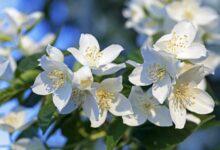The history and culture of poppies is a fascinating subject that delves into the significance and symbolism of this beautiful flower throughout history and across different cultures. Poppies have played a prominent role in ancient civilizations, art, literature, and even in remembrance of fallen soldiers.
In ancient civilizations such as the Egyptians, Greeks, and Romans, poppies were revered and associated with gods, rituals, and beliefs. They were often depicted in artwork, symbolizing fertility, sleep, and death. The Egyptians believed that poppies had medicinal properties and used them in various remedies.
Throughout art and literature, poppies have been a source of inspiration for countless artists and writers. From Vincent Van Gogh’s famous painting “Vase with Red Poppies” to John McCrae’s iconic poem “In Flanders Fields,” poppies have been a symbol of beauty, fragility, and the fleeting nature of life.
Today, poppies are widely recognized as a symbol of remembrance and honoring fallen soldiers, particularly in relation to World War I. The red poppy has become synonymous with Remembrance Day, a day dedicated to remembering those who have sacrificed their lives in war. Wearing a red poppy is a tradition that signifies support for veterans and serves as a reminder of the importance of peace.
In conclusion, the history and culture of poppies is a rich tapestry that spans across time and cultures. From ancient civilizations to modern-day remembrance traditions, the significance and symbolism of poppies continue to captivate and inspire.
Symbolism in Ancient Civilizations
The symbolism of poppies in ancient civilizations is rich and varied, with these vibrant flowers often being associated with gods, rituals, and deeply held beliefs. In ancient Egypt, for example, poppies were seen as symbols of fertility and were frequently used in religious ceremonies. The Greeks also held poppies in high regard, associating them with Demeter, the goddess of agriculture and fertility. In Roman mythology, poppies were connected to Morpheus, the god of dreams, and were believed to have the power to bring sleep and dreams.
These ancient civilizations recognized the beauty and significance of poppies, incorporating them into their religious practices and cultural traditions. Poppies were often used as offerings to the gods, and their vibrant red color was seen as a symbol of life and vitality. The delicate petals of the poppy were also believed to represent the fleeting nature of existence, reminding people to cherish each moment.
Overall, the symbolism of poppies in ancient civilizations is a testament to the enduring allure of these captivating flowers. They were not only admired for their beauty but also revered for their connection to the divine and their ability to evoke deep emotions and beliefs.
Poppies in Art and Literature
Poppies have long been a subject of fascination and inspiration for artists and writers throughout history. Their vibrant colors and delicate petals have made them a popular motif in various forms of artistic expression. One of the most famous examples of poppies in art is Vincent van Gogh’s masterpiece, “Vase with Red Poppies.” In this painting, van Gogh captures the essence of the poppy’s beauty and vividness, using bold brushstrokes and vibrant red tones to bring the flowers to life.
In addition to visual art, poppies have also played a significant role in literature. One of the most iconic literary works featuring poppies is the poem “In Flanders Fields” by John McCrae. This powerful poem, written during World War I, describes the poppies that grew amidst the graves of fallen soldiers in Flanders, Belgium. McCrae’s poignant words have immortalized the poppy as a symbol of remembrance and sacrifice.
Throughout the centuries, poppies have been depicted in various other artworks and literary works, each with their own unique interpretation and symbolism. They have been used to represent themes such as beauty, fragility, and even the transient nature of life. Whether it’s in a painting, a poem, or a novel, the presence of poppies adds depth and meaning to the artistic and literary worlds.
Vase with Red Poppies
The painting “Vase with Red Poppies” is a masterpiece created by the renowned artist Vincent Van Gogh. It is a stunning representation of the beauty and vibrancy of poppies. In this artwork, Van Gogh skillfully captures the essence of these delicate flowers, showcasing their vivid red petals and intricate details. The painting is characterized by bold brushstrokes and a vibrant color palette, which adds to its overall impact.
Van Gogh’s “Vase with Red Poppies” is a testament to his artistic genius and his ability to convey emotion through his work. The poppies in the painting symbolize life, beauty, and the transient nature of existence. The vibrant red color of the flowers is juxtaposed against a contrasting background, creating a sense of energy and vitality. This painting is a visual representation of Van Gogh’s love for nature and his passion for capturing its essence on canvas.
to John McCrae’s iconic poem
One of the most famous references to poppies in literature is found in John McCrae’s iconic poem, “In Flanders Fields.” This powerful poem was written during World War I and has since become a symbol of remembrance for fallen soldiers.
In the poem, McCrae vividly describes the scene of poppies growing among the graves of soldiers in Flanders, a region in Belgium heavily affected by the war. The poppies are portrayed as a symbol of both the sacrifice and resilience of those who lost their lives in battle.
The poem’s opening lines, “In Flanders fields the poppies blow/Between the crosses, row on row,” immediately capture the reader’s attention and evoke a sense of somber beauty. McCrae’s use of vivid imagery and powerful language creates a lasting impact, reminding us of the human cost of war and the importance of honoring those who have served.
In Flanders Fields.
In Flanders Fields is an iconic poem written by Lieutenant Colonel John McCrae during World War I. The poem vividly describes the image of poppies growing in the fields of Flanders, a region in Belgium that witnessed intense fighting during the war. McCrae’s powerful words serve as a poignant reminder of the sacrifices made by soldiers and the devastating impact of war.
The poem begins with the famous lines, “In Flanders fields the poppies blow, Between the crosses, row on row.” These lines evoke a vivid image of the red poppies swaying in the wind amidst the countless graves of fallen soldiers. McCrae’s use of vivid imagery and powerful symbolism captures the essence of remembrance and the enduring significance of the poppy as a symbol of sacrifice.
Through his poem, McCrae immortalized the poppy as a symbol of remembrance. The red poppy became a powerful emblem associated with honoring fallen soldiers and supporting veterans. Today, the poppy is worn on Remembrance Day, a day dedicated to honoring the memory of those who lost their lives in war. It serves as a visual reminder of the sacrifices made by brave individuals and a symbol of hope for a peaceful future.
Symbolism in Ancient Civilizations
The significance of poppies can be traced back to ancient civilizations, where they were revered and associated with various gods, rituals, and beliefs. In ancient Egypt, poppies were considered sacred flowers and were often used in religious ceremonies. They were believed to symbolize fertility, resurrection, and eternal life.
In ancient Greece, poppies were associated with the goddess Demeter, who was the goddess of agriculture and fertility. The red poppy was believed to be a symbol of Demeter’s power to bring life and abundance to the earth. Poppies were also associated with sleep and dreams, and they were often used in rituals to induce sleep and enhance dream experiences.
The Romans also held poppies in high regard. They associated the flower with Ceres, the goddess of agriculture, and used it in religious ceremonies dedicated to her. Poppies were also believed to have medicinal properties and were used as remedies for various ailments.
Overall, poppies played a significant role in the symbolism and beliefs of ancient civilizations, representing concepts such as fertility, resurrection, abundance, and healing.
Poppy as a Remembrance Symbol
The poppy holds a significant place as a symbol of remembrance and honoring fallen soldiers, especially in relation to World War I and the establishment of Remembrance Day. This association stems from the famous poem “In Flanders Fields” written by Lieutenant Colonel John McCrae during the war. The poem describes how poppies grew amidst the graves of soldiers in Flanders, a region heavily impacted by the war. The red poppy became a powerful symbol of the sacrifices made by soldiers and a way to remember and honor their memory.
Remembrance Day, also known as Poppy Day, is observed on November 11th each year to commemorate the armistice signed between the Allies and Germany, marking the end of World War I. It is a day to reflect on the lives lost and the impact of war. Wearing a red poppy on Remembrance Day has become a tradition in many countries, symbolizing respect and gratitude for the sacrifices made by soldiers. The Royal British Legion, for example, organizes the Poppy Appeal to raise funds for veterans and their families.
Poppy Day Traditions
Poppy Day, also known as Remembrance Day, is a solemn occasion that honors the sacrifices made by soldiers in various wars. One of the key traditions of this day is the wearing of poppies, specifically red poppies. The red poppy has become a symbol of remembrance and is worn as a way to show respect and gratitude to those who have lost their lives in service.
The significance of the red poppy dates back to World War I, where the battlefields of Flanders in Belgium were covered with poppies. In his iconic poem “In Flanders Fields,” Lieutenant Colonel John McCrae described how the poppies grew amidst the devastation and inspired the idea of using them as a symbol of remembrance. Since then, the red poppy has become synonymous with honoring fallen soldiers.
On Poppy Day, people not only wear the red poppy but also participate in various ceremonies and traditions. One of the most widely observed traditions is the moment of silence. At 11 am on November 11th, people pause for a minute of silence to reflect on the sacrifices made by soldiers and to pay their respects. This moment of silence is a powerful way to honor the fallen and to show solidarity with those who have served.
In addition to the moment of silence, there are also ceremonies held at war memorials and cenotaphs. These ceremonies often include the laying of wreaths, the playing of the Last Post, and the recitation of poems or prayers. The red poppy is prominently displayed during these ceremonies, serving as a visual reminder of the importance of remembering and honoring those who have given their lives for their country.
The tradition of wearing poppies on Poppy Day is not only steeped in symbolism but also serves as a way for individuals to actively participate in remembrance. By wearing the red poppy, people demonstrate their support for veterans and their families, as well as their commitment to never forgetting the sacrifices made in the name of freedom.
Frequently Asked Questions
- What is the significance of poppies in ancient civilizations?
Poppies were revered in ancient civilizations and associated with gods, rituals, and beliefs. They symbolized fertility, sleep, and death in Egyptian culture, while the Greeks and Romans associated them with the goddess of agriculture and fertility, Demeter.
- How are poppies represented in art and literature?
Poppies have been depicted in famous artworks, such as Van Gogh’s “Vase with Red Poppies,” where they symbolize beauty and fleeting nature. In literature, the iconic poem “In Flanders Fields” by John McCrae immortalized poppies as a symbol of remembrance for fallen soldiers.
- Why is the poppy a remembrance symbol?
The poppy became a remembrance symbol due to its association with World War I. In Flanders, Belgium, poppies grew amidst the devastation of the war, inspiring the poem “In Flanders Fields.” The poem’s popularity led to the adoption of the poppy as a symbol to honor and remember the sacrifices of soldiers.
- What are the traditions and ceremonies associated with wearing poppies on Remembrance Day?
On Remembrance Day, wearing a red poppy is a common tradition to show respect for fallen soldiers. The red color symbolizes the bloodshed during wars. Observing a moment of silence at 11 am on November 11th is another important tradition to honor the memory of those who served.




